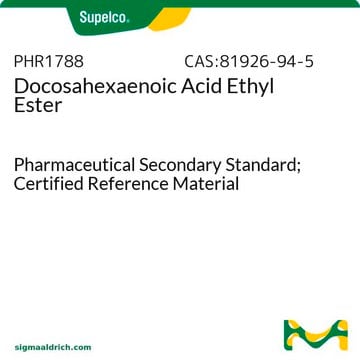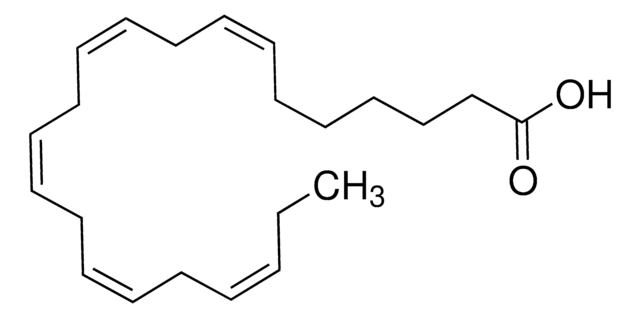E7006
cis-5,8,11,14,17-Eicosapentaenoic acid
≥85%, liquid
Synonym(s):
EPA, Timnodonic acid
About This Item
Recommended Products
biological source
fish oil
assay
≥85%
form
liquid
refractive index
n20/D 1.4977 (lit.)
mp
−54-−53 °C (lit.)
density
0.943 g/mL at 25 °C (lit.)
functional group
carboxylic acid
lipid type
omega FAs
shipped in
ambient
storage temp.
−20°C
SMILES string
CC/C=C\C/C=C\C/C=C\C/C=C\C/C=C\CCCC(O)=O
InChI
1S/C20H30O2/c1-2-3-4-5-6-7-8-9-10-11-12-13-14-15-16-17-18-19-20(21)22/h3-4,6-7,9-10,12-13,15-16H,2,5,8,11,14,17-19H2,1H3,(H,21,22)/b4-3-,7-6-,10-9-,13-12-,16-15-
InChI key
JAZBEHYOTPTENJ-JLNKQSITSA-N
Gene Information
mouse ... Pparg(19016)
Looking for similar products? Visit Product Comparison Guide
Biochem/physiol Actions
Storage Class
10 - Combustible liquids
wgk_germany
WGK 3
flash_point_f
200.1 °F - closed cup
flash_point_c
93.4 °C - closed cup
ppe
Faceshields, Gloves, Goggles, type ABEK (EN14387) respirator filter
Certificates of Analysis (COA)
Search for Certificates of Analysis (COA) by entering the products Lot/Batch Number. Lot and Batch Numbers can be found on a product’s label following the words ‘Lot’ or ‘Batch’.
Already Own This Product?
Find documentation for the products that you have recently purchased in the Document Library.
Customers Also Viewed
Our team of scientists has experience in all areas of research including Life Science, Material Science, Chemical Synthesis, Chromatography, Analytical and many others.
Contact Technical Service













